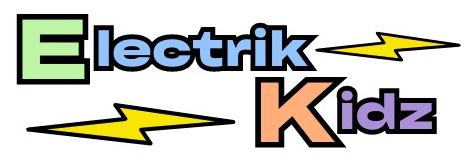
It’s hard to deny that keeping our hands clean is important to stay healthy, but it’s especially challenging for kids. You know the drill: They get their hands dirty or come in contact with a contaminated surface and have no idea what to do next… That’s why teaching our children about handwashing and good hygiene practices is essential for them to develop healthy habits now that will contribute to their lifelong health.
In this article, we’ll discuss the Importance of washing your hands regularly, review ways you can help kids learn healthy hygiene habits, and look at some fun strategies that make washing your hands something worth doing!
Is your Child having trouble understanding the Importance of handwashing?
Washing your hands is one of the most effective ways to stay healthy. It’s simple and can be done anywhere, but it’s an essential habit that needs to be taught at a young age. Not only will washing their hands help stop illnesses like colds or flu from spreading, but it also reduces their risk for other serious diseases like meningitis and hepatitis A.
Help your children understand why good hygiene practices are important with our easy-to-follow guide on handwashing. Our tips cover everything from teaching children when to wash their hands to how long they should lather up during each wash. Just think, you’ll soon have strong, independent little germ fighters!
Keep reading to explore and have fun while understanding and teaching your child the importance of washing hands!
The Basics of Good hygiene and Why Washing Hands is Important
When it comes to keeping your children safe from germs, teaching them the basics of good hygiene is key. Explain why handwashing is important with simple facts like:
- Washing hands helps stop the spread of germs and illnesses.
- Good hygiene practices reduce their risk for meningitis and hepatitis A.
- Germs can travel on surfaces, so washing hands is a way to protect against germs.
- If you don’t wash your hands before eating or touching food, you can get sick from the germs.
It’s also important to explain why it’s best to use soap and water when cleaning up:
- Soap helps break up dirt, grease, and food particles that can’t be seen with the naked eye.
- Soap also helps to get rid of germs like bacteria and viruses.
- Washing hands with soap and water is more effective than using a sanitizer or wipes.
Once your child understands why washing their hands is important, you can start teaching them how.
Step-by-step Guide for Kids to Washing Hands

When teaching kids how to wash their hands, it’s important to break the process down into simple steps. First, have your child practice without soap so they get the hang of the motions:
- Start by wetting your hands under running water.
- Rub palms together in a circular motion.
- Interlock fingers and scrub between them.
- Scrub the back of each hand.
- Clean in between fingers.
- Rinse hands under running water.
Once your child has mastered the basic motions, they can start using soap. Remind kids to use warm water and select a soap that will help create lather easily:
- Make sure hands are wet before applying soap.
- Rub the bar of soap between both hands until a lather is created.
- Start rubbing palms together and work up a good lather.
- Interlock fingers and scrub between them.
- Scrub the back of each hand for at least 20 seconds.
- Clean between fingers, paying special attention to fingernails.
- Rinse hands under running water, making sure to get rid of all the soap.
- Dry hands with a clean towel or air dry.
Once your child is comfortable with handwashing techniques, you can focus on teaching them when it’s important to wash. Remind your kids that washing hands is most effective after using the restroom and before eating or touching food.
Make it fun – Five Tips to Make Washing Hands More Enjoyable for Kids.
Washing hands is an important habit, but it mustn’t be boring. Here are some fun ideas that will help make washing hands a bit more exciting for kids:
- Sing songs: Have your child hum a familiar tune while they wash their hands to ensure they wash long enough.
- Set reminders: Need a reminder? Place a sign near the sink or set an alarm on your phone.
- Create a routine: Routines help kids remember and make handwashing fun. Have them do a special dance or play their favorite song every time they wash their hands.
- Get creative with soap: Let your children pick out soap in the shape of their favorite characters or animals.
- Reward them: Give your children a sticker or praise when they wash their hands correctly.
With these tips and tricks, you can help your kids understand the Importance of washing their hands and develop good habits that will stick with them for life! Good luck!
Frequently Asked Questions About Washing your hands: Help Kids to Understand Ways to Stay Healthy.
Q: What are other hygiene habits that need to be taught?
A: Good hygiene habits include covering your mouth when coughing or sneezing, brushing your teeth, taking showers and baths regularly, and using hand sanitizer.
Q: How often should kids wash their hands?
A: Kids should wash their hands before eating or touching food, after using the restroom, when they come home from school or activities, and whenever their hands are dirty.
Conclusion
Young children are often too young to understand why they need to take good care of themselves by washing their hands and why teaching them proper hygiene is important. As parents, you can teach them these important habits that will benefit all areas of their lives.
Subscribe to our email newsletter to get the latest posts delivered right to your email.

Comments